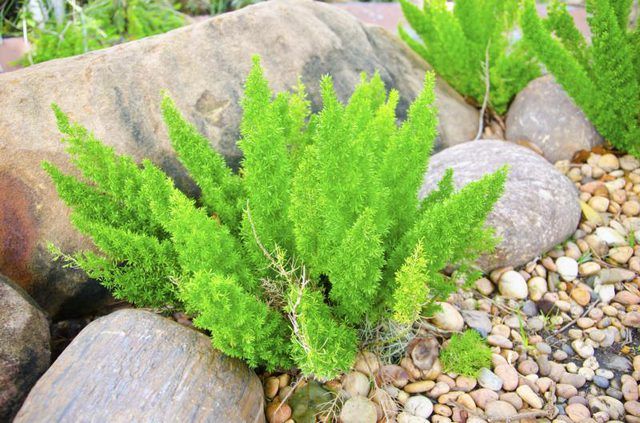Bulbs
Flower Basics
Flower Beds & Specialty Gardens
Flower Garden
Garden Furniture
Garden Gnomes
Garden Seeds
Garden Sheds
Garden Statues
Garden Tools & Supplies
Gardening Basics
Green & Organic
Groundcovers & Vines
Growing Annuals
Growing Basil
Growing Beans
Growing Berries
Growing Blueberries
Growing Cactus
Growing Corn
Growing Cotton
Growing Edibles
Growing Flowers
Growing Garlic
Growing Grapes
Growing Grass
Growing Herbs
Growing Jasmine
Growing Mint
Growing Mushrooms
Orchids
Growing Peanuts
Growing Perennials
Growing Plants
Growing Rosemary
Growing Roses
Growing Strawberries
Growing Sunflowers
Growing Thyme
Growing Tomatoes
Growing Tulips
Growing Vegetables
Herb Basics
Herb Garden
Indoor Growing
Landscaping Basics
Landscaping Patios
Landscaping Plants
Landscaping Shrubs
Landscaping Trees
Landscaping Walks & Pathways
Lawn Basics
Lawn Maintenance
Lawn Mowers
Lawn Ornaments
Lawn Planting
Lawn Tools
Outdoor Growing
Overall Landscape Planning
Pests, Weeds & Problems
Plant Basics
Rock Garden
Rose Garden
Shrubs
Soil
Specialty Gardens
Trees
Vegetable Garden
Yard Maintenance
How to Grow Asparagus Fern
How to Grow Asparagus Fern. The new growth of asparagus fern (Asparagus densiflorus) resembles tiny asparagus spears, hence its common name. Not actually a fern, this evergreen perennial, suited to U.S. Department of Agriculture plant hardiness zones 9a through 11, belongs to the same botanical family as culinary asparagus (Asparagus offinalis,...

The new growth of asparagus fern (Asparagus densiflorus) resembles tiny asparagus spears, hence its common name. Not actually a fern, this evergreen perennial, suited to U.S. Department of Agriculture plant hardiness zones 9a through 11, belongs to the same botanical family as culinary asparagus (Asparagus offinalis, USDA zones 4 through 9). It is a good plant for the beginning gardener because it requires little care.
Growing Outdoors
Asparagus ferns grow best outdoors in consistently moist, loamy soil with a pH of 6.1 to 7.5. It should drain well enough that it does not get soggy. Loam is soil that contains roughly equal parts of sand, silt and clay. Asparagus ferns grow from 18 to 24 inches tall and should be spaced 36 to 48 inches apart in filtered sun or bright indirect light. You can grow them in full shade, but their foliage will turn a lighter green. Hot afternoon sun may cause the leaves to turn yellow. They grow best with a minimum winter temperature of 50 degrees Fahrenheit. A light freeze will cause them to die to the ground, but the roots will recover from a freeze from 20 to 25 degrees F.
Growing in Containers
Whether asparagus fern containers are located indoors or outdoors, they should be filled with a mix of 1 part of sand or perlite to 2 parts of loam and 2 parts of peat moss. Keep indoor containers by a brightly lit window with morning sun if possible. When a container is outdoors, keep it in filtered sun or bright, indirect light. Asparagus ferns can grow a mass of roots 1 inch wide and 3 to 6 feet long, capable of filling a container and blocking its drainage hole. Re-pot an asparagus fern when a solid mass of tough roots pushes the soil to an inch or more above the rim of the pot. When you remove a cramped plant, divide it and plant in two or more containers or move to a larger container. Use a pruning saw to cut the root mass into pieces. Donít worry about damaging the roots. They will recover. Before dividing the root mass, soak your saw blade in 70 percent isopropyl alcohol -- available at most garden supply centers and pharmacies -- for 2 to 5 minutes and air dry before using.
Watering
Keep soil in containers lightly moist and let it dry between watering. If a container accumulates too much water, enclosed asparagus fern roots can develop fungal diseases. Letting the potting mix in containers get dry between watering assures that this will not happen. There is less danger of water accumulating in outdoor soil that drains well. Keep outdoor soil evenly moist throughout the spring to late summer growing season. If it is not raining, moisten the soil with water at the base of the plant -- not on the foliage. There is no need to water in the winter when the plant is dormant. Mulch outdoor asparagus ferns with a 2- to 3-inch layer of leaves or chopped or shredded wood or bark to suppress weeds and help conserve moisture.
Fertilizing
To container-grown asparagus ferns, add 1 teaspoon of slow-release 10-10-10 fertilizer pellets per gallon of soil mix in early spring. Spread the pellets on top of the mix and water them in. You may never need to fertilize an asparagus fern growing outdoors in rich soil. If you think your newly planted outdoor asparagus fern is doing poorly, fertilize it with 1/4 pound water-soluble 10-20-10 fertilizer per 10 square feet of area early in the spring to late summer growing season. Sprinkle the fertilizer on top and water it in. Do not fertilize near the end of the growing season, signaled by the first autumn frost.